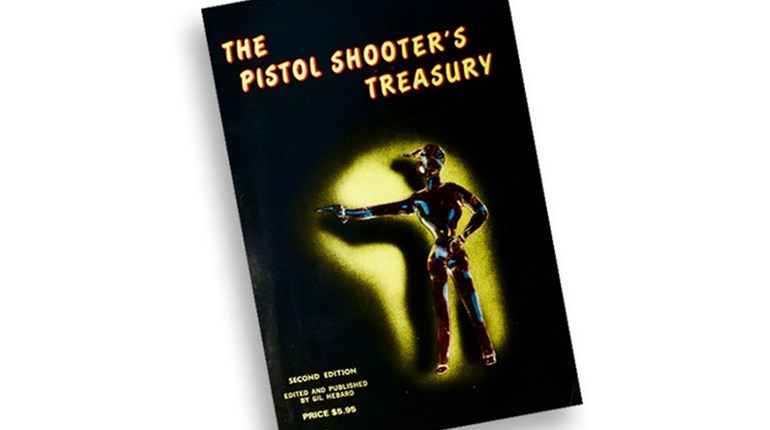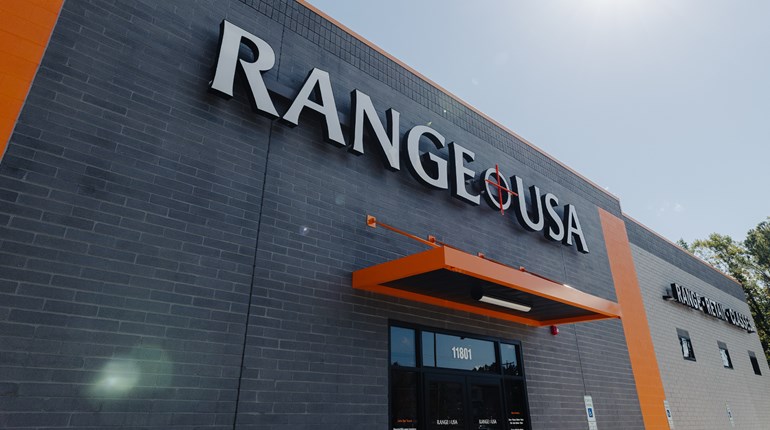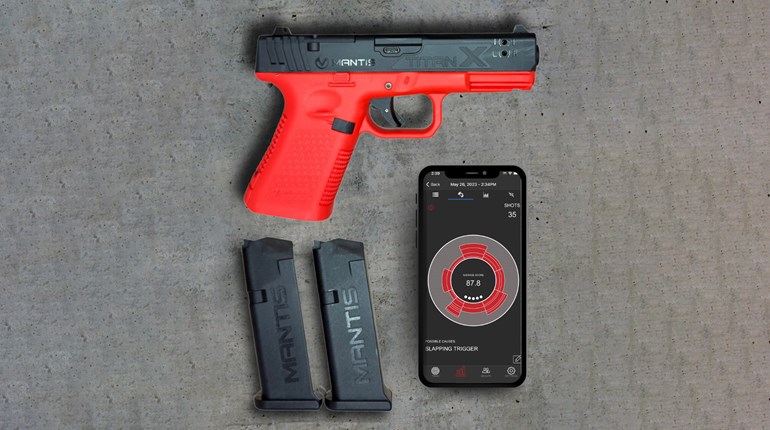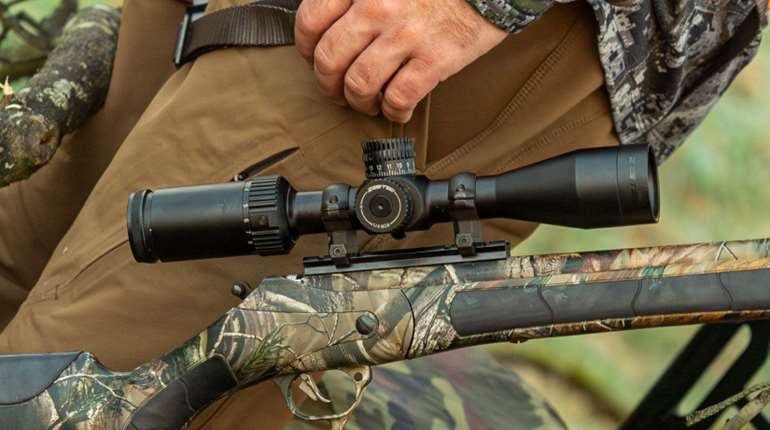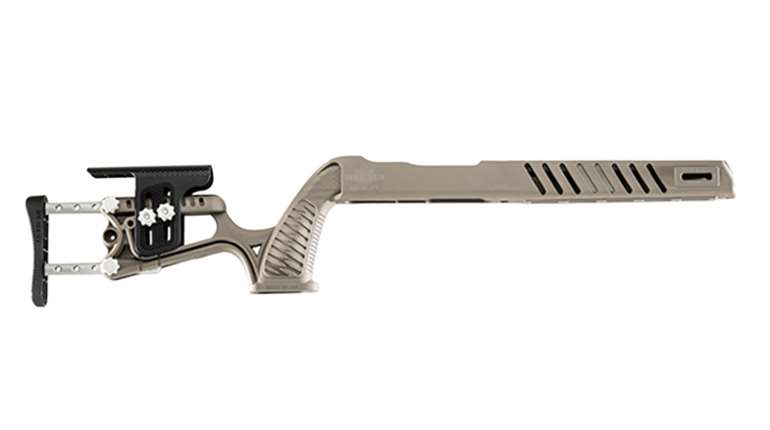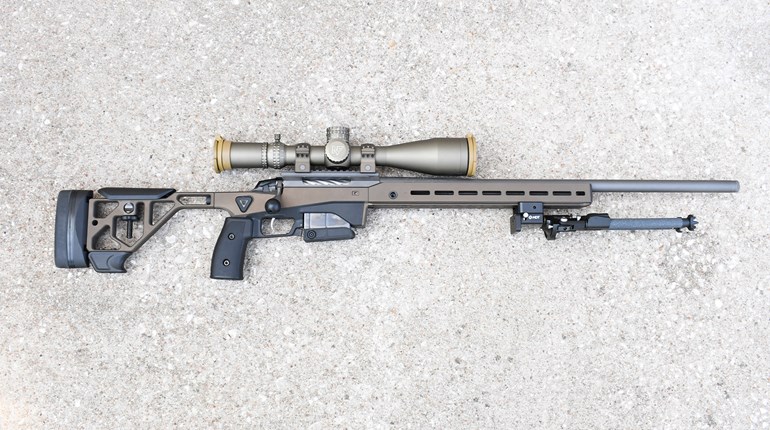When we put together our handbook on using red-dot sights on pistols, a couple lines jumped out at me:
To unlock the mysteries of shooting the red dot fast, I grabbed my Beretta APX RDO and signed up for a class from noted red-dot expert Scott Jedlinski of Modern Samurai Project. Jedlinski, or “Jedi” as he’s called online, has an impressive training resume and has shot up to the rank of USPSA Master Class shooter in a very short time.
“Jedi” happens to be both an online (and real-life) friend, and he’s not all that far from me here in northern Virginia. I got in touch with him and asked if I could sit in on the next red-dot class he put on in our area. We went back and forth for a bit, when he offered to come to NRA HQ to give a class for NRA Publications staff and other interested NRA employees.
Full stop. Folks, let me tell you this right now. If you ever get a chance to take a class with Jedi, take it. If he ever offers to come to your place of business and give a class for you and your co-workers, move Heaven and Earth to make it happen (I mean this literally. I’d have grabbed a shovel and started digging if it was necessary).
So, a little more back-and-forth ensued, some e-mails were exchanged, I managed to weasel plead for some range time on the NRA Range and I rounded up a group of interested parties. A date was set, and the only thing left was to secure hardware. As it happens, I happen to have a Leupold DeltaPoint Pro. I also have a Smith & Wesson M&P VTAC with an Apex Tactical trigger and True Precision barrel, so I gathered the appropriate mounting hardware and combined the two:
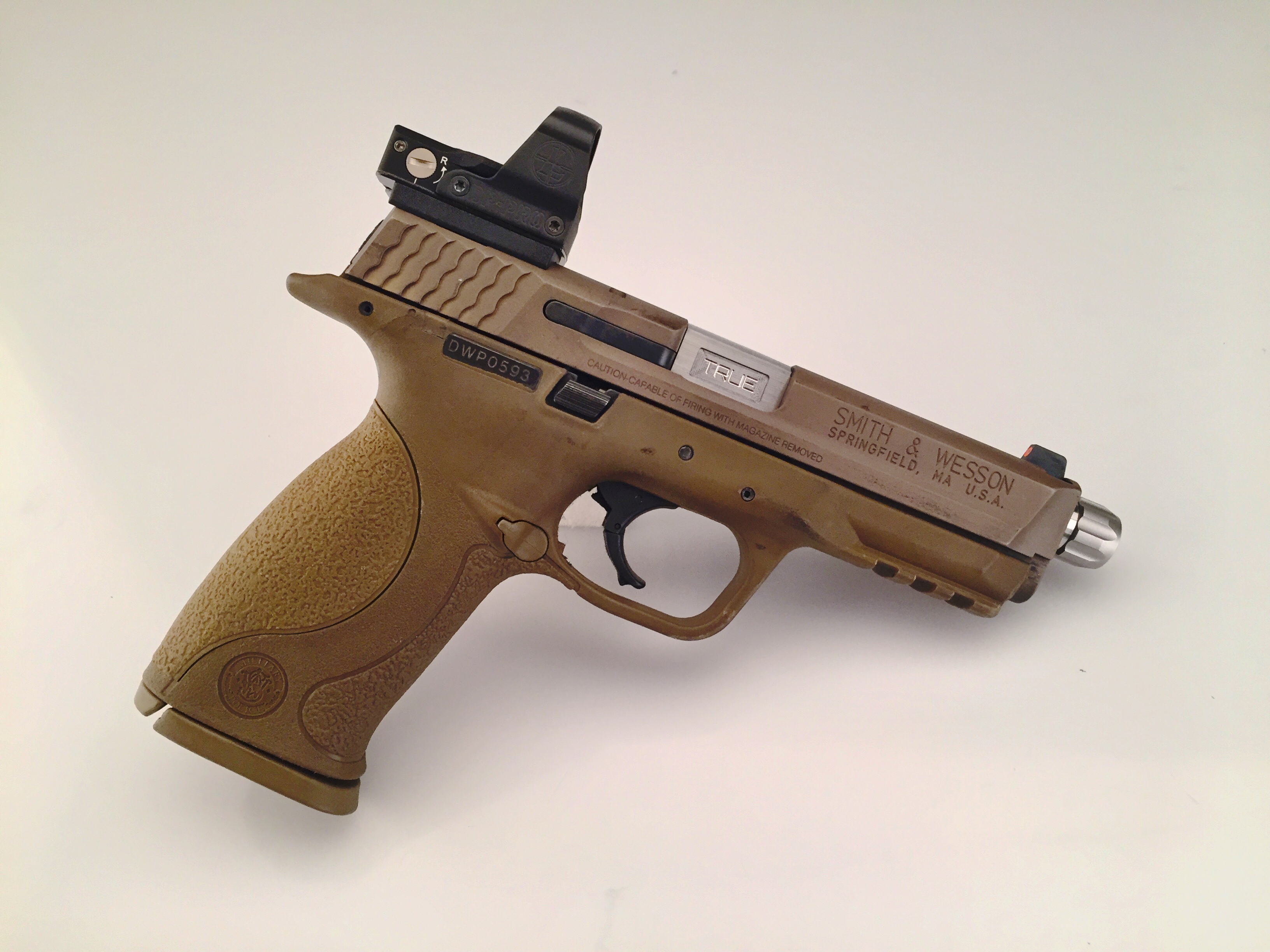
One thing you’ll notice is the extra height from the DP Pro not being mounted in a dedicated slide cut (I believe Jedi called it the “Sears Tower”…) I didn’t find the extra height to be problematic (except one area, to be covered later), but most folks try to minimize the height discrepancy with milled slides. I had hoped to put together a Trijicon RMR-equipped Brownells Glock G19 slide, but couldn’t pull the hardware together in time for the class. C’est la vie… I’ve had the M&P for quite a few years and am not especially horrid with it, so I mounted the DP Pro, sighted it in at 10 yards, and figured I was good to go (more on this later, too).
On the day of the class, we gathered bright and early in the NRA Range classroom. Jedlinski gave us some of his background (lifelong martial artist, holder of F.A.S.T. coin number 15, Master class in USPSA), a brief overview of red dots, some advantages and disadvantages and some strategies. This is a condensed/amalgamated version combining elements of his one- and two-day courses, and he kindly de-tuned it for the editors present. After he finished dropping knowledge on his appreciative audience, it was time to hit the range and see what this red-dot business was all about.
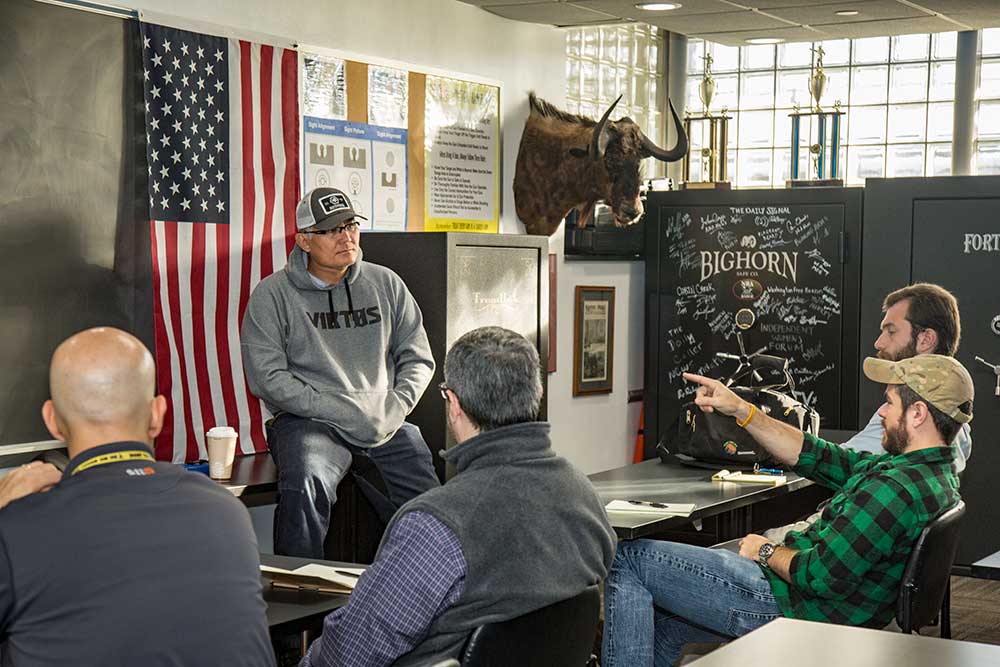
One thing before we get into the range portion. Jedlinski is both exceedingly humble and a skilled teacher. In our group, we had a pretty wide range of experience in the shooters, from another Master class shooter to several shooters with minimal red-dot pistol shooting experience. No matter the skill level, Jedlinski offers encouragement, suggestions and (in the case of this author), slightly pointed terms of endearment… He’s a solid dude, and an excellent instructor. It’s obvious he is an eternal student, and is more concerned about imparting knowledge than impressing the class (that’s not to say he didn’t impress us, mind you—the dude is a freakin’ wizard behind a pistol).
So we started out by zeroing our red-dot pistols at 10 yards, pretty standard (as it turned out, I had successfully zeroed my pistol before the class—hey, even a blind pig finds an acorn, right?). Once zeroed we walked up to basically target distance and ran our guns fast, just to get a feel for how things worked. We spent a fair portion going over body mechanics; Jedlinski’s martial-arts training is evident here, because he had us run several drills to illustrate why he favored one position over another.
It boils to do, as he puts it, eliminating (or at least reducing) the “Useless Frenetic Motion” that eats up time and throws off shots. We’ll use the drawstroke as an example: It’s often broken down into a series of stages, which is a great introduction, but often gets stalled there. Rather than present in a 3-, 4-, 5- or 17-stage draw, Jedlinski demonstrated how one fluid motion accomplishes the same thing as a jerky, multi-step process.
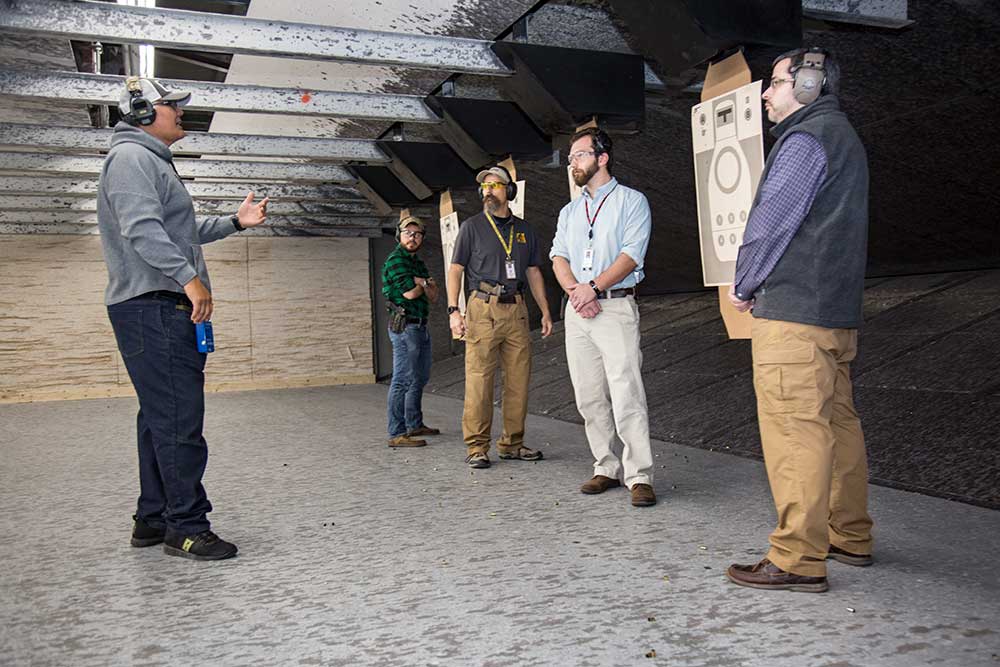
Here’s the thing. You might be wondering why we spent so much time going over the proper draw, and that’s a fair question. It’s simple, really. When the mechanics of the draw are correct, the pistol is properly positioned and—most importantly—the dot is right in your field-of-view. One of the biggest drawbacks/complaints to the pistol-mounted red-dot system is “finding” the dot in a defensive scenario, so working on the best presentation possible addresses this head-on.
The following hours were a mix of close-range drills, intermediate-distance work and even some longer-range shooting. Starting up close, we learned three methods for near-contact-distance shooting with a red-dot-equipped pistol: back-of-slide, using the red dot window as a ghost sight and “guillotining” the bullseye (you put the top of the red-dot housing through the center of the bullseye). Again, this is to counter the accusation that a dot-equipped handgun would be slower in a close-range fight. It was immediately apparent that one of the three methods worked for everyone (in my case, the back-of-slide and ghost-ring methods worked fine; the height of the DeltaPoint Pro in the dovetail mount worked against me in the guillotine method).
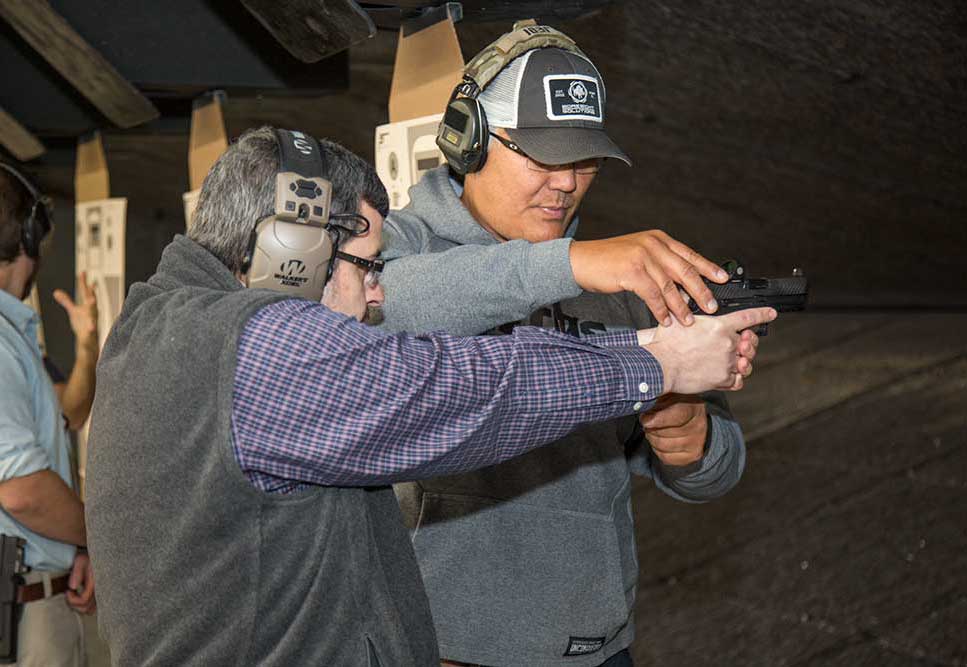
For the last section, we were stationed at the 25-yard line, and instructed to draw and shoot an “A” zone hit inside of 3 seconds. While it sounds hard (and it was; I was only able to make a “C” zone hit, although my elevation was spot-on…), Jedlinski showed us how we could pick up speed without sacrificing accuracy. Drawing upon the mechanics of a solid, fluid presentation, it is possible to draw quickly and slow down just before breaking the shot (80:20 or 90:10, it was called, you run most of the drill at high speed, and slow down for the final portion).
What’s the big takeaway from this class? I’d say it helps you realize that all of the “negatives” of a red-dot-equipped pistol… aren’t. While, yes, the saw about batteries failing when you need them isn’t particularly untrue, there’s an awful lot you can do to mitigate this to essentially nil.
As for finding the dot? Well, that’s even easier: Put the work in. Take the class. Learn the proper presentation. Practice. Like, oh, just about any other new skill you undertake. Get training, practice, get better. It’s hard work, to be sure, but it is by no means insurmountable. And, more than anything, take a class with Modern Samurai Project. You will absolutely learn something, even if you have no interest in red-dot sights on pistols. For another perspective on this red-dot pistol course, check out the experience of our American Rifleman colleagues here.

